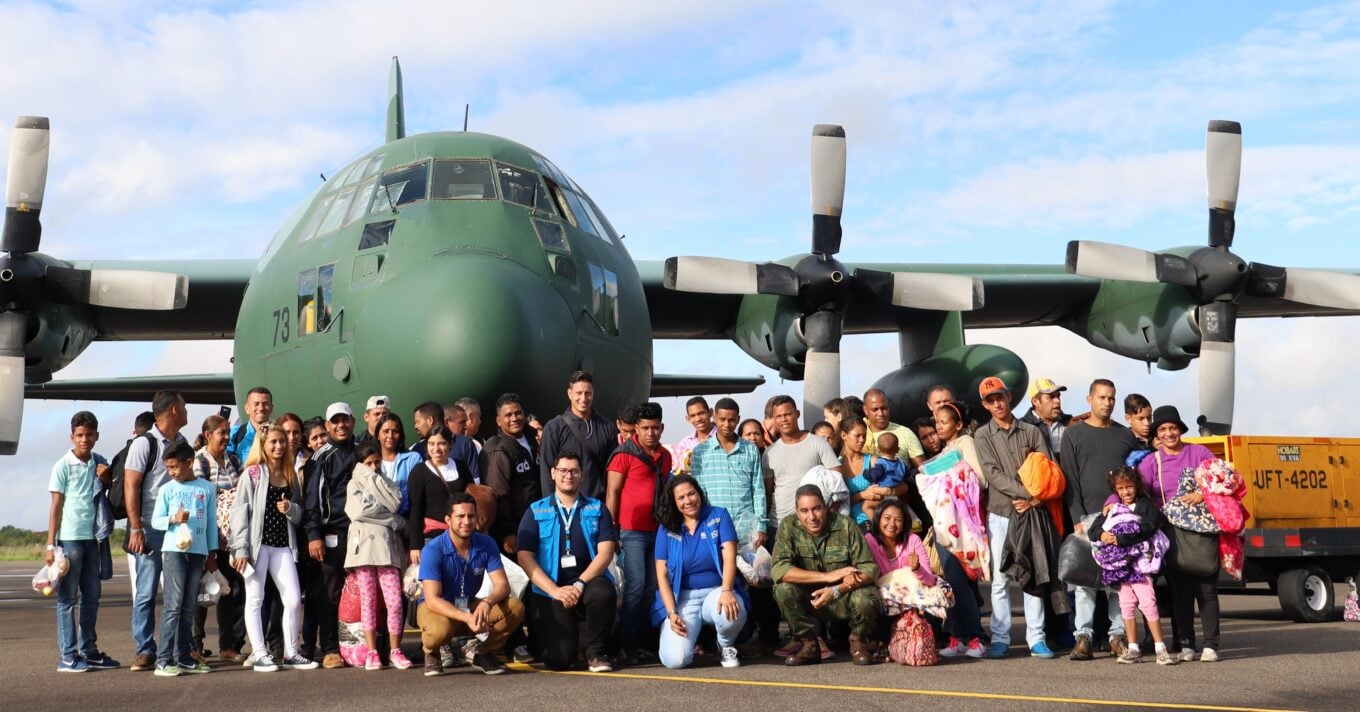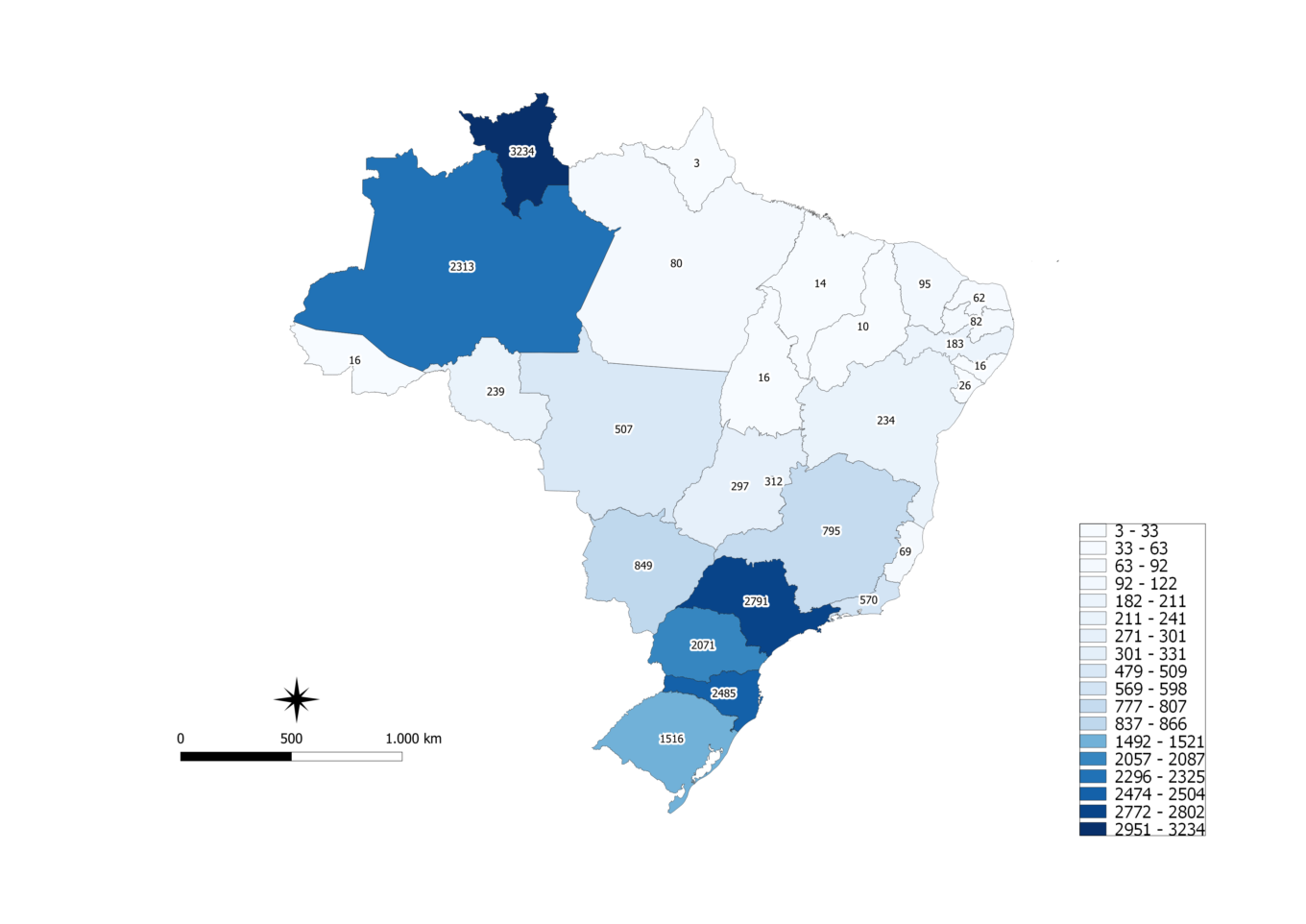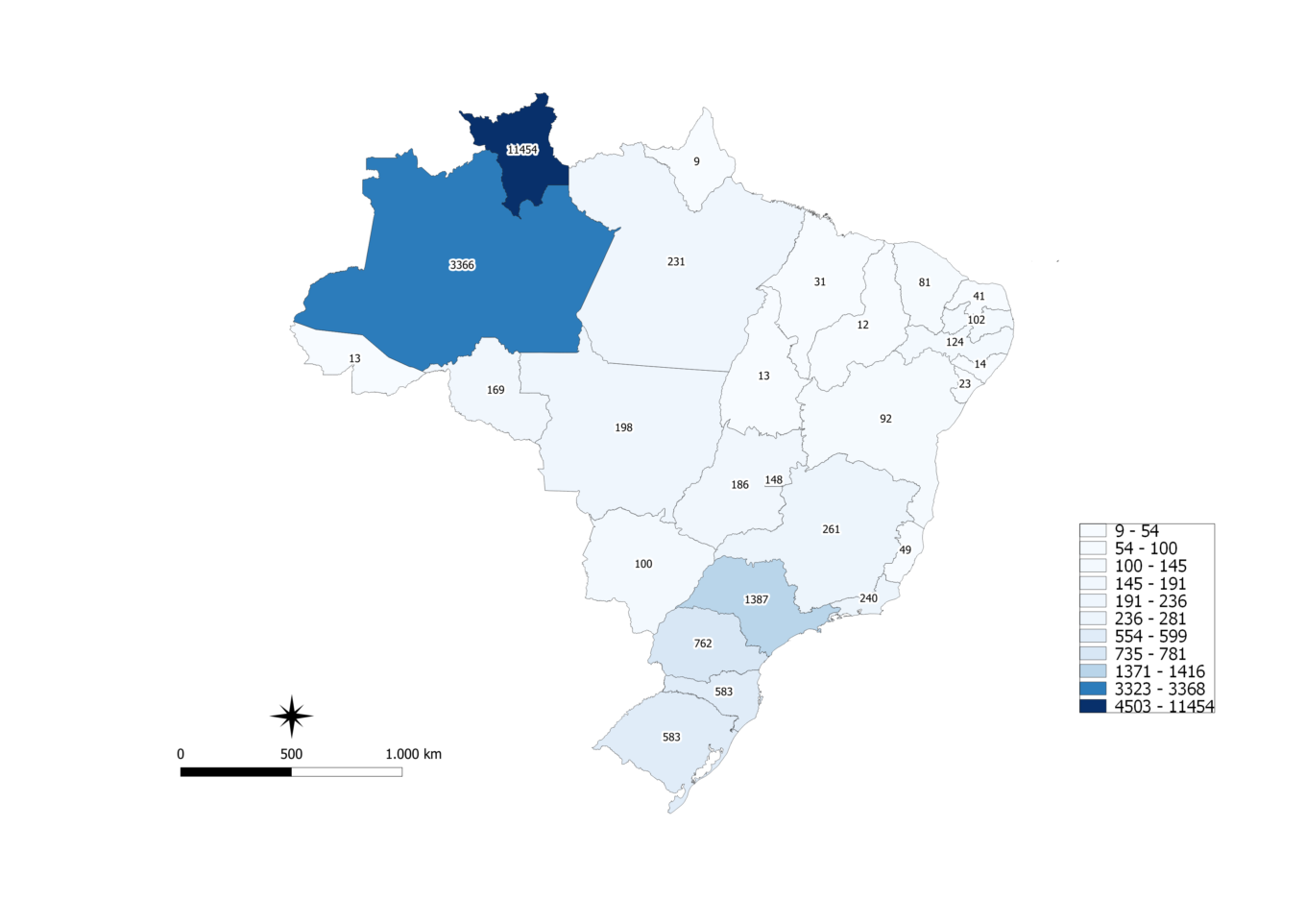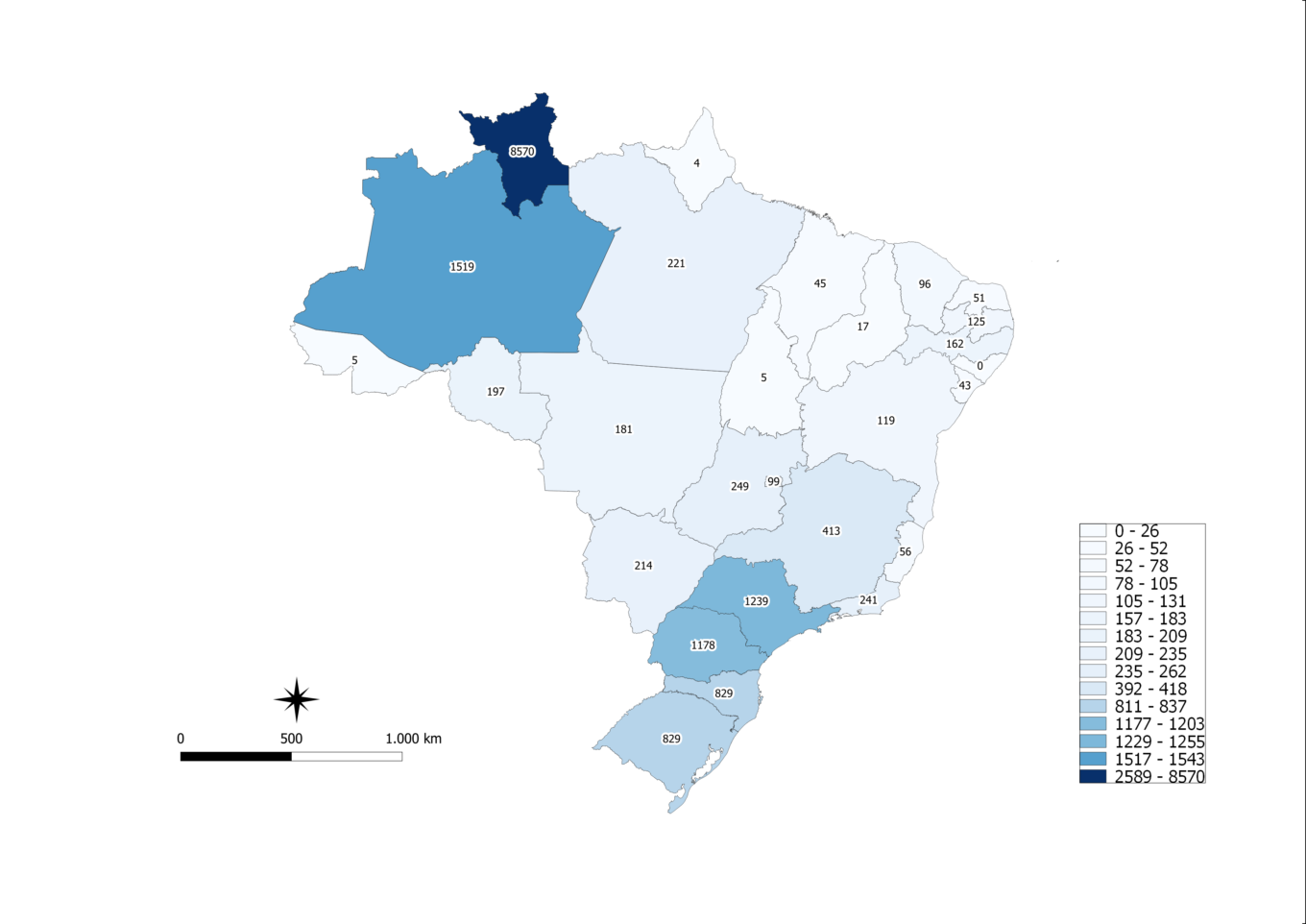By Jose Egas (Representative-Brazil, UNHCR), Paulo Sergio Almeida (Senior Livelihoods Officer, UNHCR), Nikolas Pirani (Associate Economist, UNHCR)

Since January 2021, a new interactive data dashboard is assisting the Federal Government of Brazil and humanitarian actors in monitoring the country’s relocation strategy and support for Venezuelan refugees and migrants.
Close monitoring of these groups is important as it helps determine the policies required to foster social cohesion and economic empowerment as Venezuelans try to build new lives in Brazil.
The dashboard presents monthly data tracking the socioeconomic situation of Venezuelans who are participants in Operation Welcome, the Brazilian Government’s official response to managing the Venezuelan refugee crisis. A core element of the operation is the interiorization strategy, which relocates willing Venezuelans from Brazil’s border state of Roraima to other cities with better economic prospects. As of 2018, more than 46,000 Venezuelans have been relocated to over 620 municipalities in 26 states and the Federal District.
Close monitoring is important as it helps determine the policies required to foster social cohesion and economic empowerment as Venezuelans work at rebuilding their lives in Brazil.
The dashboard is a joint initiative between the Ministry of Citizenship, UNHCR and IOM. It combines Brazil’s administrative data on Operation Welcome and supplements it with anonymized data from UNHCR’s proGres refugee registration database. The result is an interactive dashboard that provides monthly updates on the number of Venezuelans relocated, the municipalities and states that received them, as well as information on their age, work experience, educational and specific protection needs profiles.
While Venezuelans in Brazil are eligible for residency and work permits and afforded access to a variety of government services, having these socioeconomic and demographic profiles is particularly important for states when it comes to planning local responses appropriate for new arrivals to their respective municipalities.
For example, the dashboard shows that overall, 55% of relocated Venezuelans have completed high school, while only 6% have completed higher education. Regarding specific protection needs, 25% of the relocated Venezuelan refugees and migrants report having at least one specific need category, such as: child out of school, single parent, pregnancy, woman at risk, some type of disability, among others.
Through the dashboard, state and municipalities are able to further distil these aggregate statistics by location in order to have the profiles and specific vulnerabilities of Venezuelans headed to their areas.
How are relocated Venezuelans faring in Brazil so far?
While continued monitoring will provide more insights as Operation Welcome progresses, a policy note by UNHCR published in August 2020 uses national administrative data to demonstrate in real terms how Venezuelans – those relocated through the programme as well as through private means – are participating in the labour market and accessing basic services necessary to build human capital.
Although still in its early stages, the use of national data sources, combined with existing registration data, is an efficient way to gather insights into a population that would otherwise be too dispersed to efficiently survey. It has enabled the documentation of several key observations, including the following:
There is improved access to formal employment. According to the government’s administrative data, Venezuelan refugees and asylum seekers were increasingly entering the formal labour market – most notably in the southern and southeastern regions of Brazil (Figure 1) – contributing to their economic inclusion and prospects of achieving self-reliance. Over time, as more Venezuelans are formally employed, this should reduce the pressure on social safety net programmes.
Figure 1: Total number of Venezuelans in the formal labour market, from 2011 to 2019 (left), and 2019 by region (right)


Slower progress in school attendance. Data on school attendance showed a less positive picture whereby a high number of Venezuelans were not attending schools: 58% among those aged 6-14 and 69% among those aged 15-17 (Figure 2). This is in stark contrast with the Brazilian population, where 12% of Brazilian children aged 15-17 years do not attend school and attendance is almost universal among those aged 6-14. Non-attendance is particularly pronounced outside of the gateway regions in the northwest.
Possible reasons for the low school enrolment among Venezuelans are language barriers, distance from schools, inability to afford transportation costs, not being able to meet school enrolment deadlines due to time of arrival in the country, lack of enrolment information, and limited vacancies in schools. The continued migratory movement in search of economic prospects may also prevent families from maintaining school enrolment in the same municipality.
Figure 2: Share of Venezuelans enrolled in school, by Federal Unit in Jan 2020 (left) and by age (right)


Low but increasing use of social assistance schemes. Venezuelans were increasingly accessing Brazil’s social assistance schemes, which target the country’s poorest households. Participation rates of Venezuelan households in the country’s main conditional cash transfer programme, Bolsa Família, was on the rise over the period January 2017 to January 2020 (Figure 3). Currently, an estimated 21% of Brazilians access Bolsa Família, versus only 6.5% of Venezuelans who did so. As both populations have similar proportions of poor households (UNHCR, 2020), the difference in utilization rate was likely due to reasons other than income. Probable reasons included inability to enrol due to misinformation, language barriers, expired documentation, not meeting the qualifying criteria, or living in municipalities that have met their quotas on number of households utilizing the programme.
Figure 3: Number of Venezuelan beneficiaries of Bolsa Família from Jan 2018 to Feb 2020 (left), and as of Feb 2020 (right)


What are the policy implications of these data analysis?
The analysis of official data related to the formal labour market and social protection systems suggests that the relocation programme has contributed to the integration of Venezuelans in the various regions of Brazil. Opportunities that, arguably, they would not have had they remained in Roraima, where a large Venezuelan population would have over-burdened the state’s physical, financial and social infrastructure.
This analysis also suggests that it is necessary to continue monitoring the relocations and to create new tools, if needed, to evaluate the impact on both Venezuelans and the local community, especially as the COVID-19 pandemic is causing widespread impacts on livelihoods. This is particularly true with education, since there are early, worrying signs that school attendance among Venezuelans is extremely low, where the majority between 6-17 years old are not attending school. This has negative bearing on human capital development and the capacity of this younger cohort to realize their full potential.
As the relocation programme had an average of over 1,600 monthly relocations in 2020, continued monitoring should, ideally, also monitor the capacity of the recipient states to absorb the growing number of new entrants. UNHCR is continuing to monitor these key indicators and using the information to inform the protection and support of Venezuelans in Brazil, in cooperation with the Federal and local Governments of Brazil, humanitarian and development partners.
